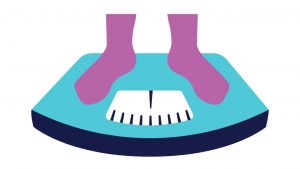
What is commonly referred to as “age verification” is actually a process called “age assurance.” Age assurance is any method of checking someone’s age. The term “age verification” is often used as a synonym to age assurance, but officials and experts consider age verification as a type of age assurance.
When evaluating methods of age assurance, there are four considerations to keep in mind: privacy, accuracy, equity, and difficulty.
- Privacy: Is sensitive data collected?
- Accuracy: What is the quality or correctness of the information?
- Equity: Does the method affect all users the same?
- Technical burden: How challenging is it for platforms and for users?
Methods of Age Assurance
Asking, also referred to as “self-declaration”
This is the method most users are familiar with and, as of 2024, the method currently used by the majority of social media platforms in the United States. Sometimes called “age-gating,” the process involves the platform asking a user how old they are.
Privacy: High – No sensitive data is collected or stored.
Accuracy: Low – Anyone can lie about their age.
Equity: High – People are willing to use it and everyone has the same capability to use it. It is unbiased.
Technical burden: Low – This is the easiest for users and platforms.
The use of official documents, also referred to as “age verification”
This includes any method that uses physical documentation or verifiable sources. Some examples include government ID, credit cards, or asking a verified adult.
Privacy: Low/Medium – This has the highest privacy risk and requires strong safeguards. Risks are increased whenever information is stored or transferred.
Accuracy: High – This is the most accurate method.
Equity: Low/Medium – Not every user has access to a government ID or credit card. Kids with parents who are incapable or unwilling to verify their age are at a disadvantage. Some people might be unwilling to give ID because of fear of persecution by the government or their community.
Technical burden: Medium – Just showing ID is easy, but the security around this method can be challenging. In the United States, legal experts worry these methods could restrict free speech by limiting access.
Making an educated guess, also referred to as “age estimation”
This is any method that uses information about a user to estimate their age. There are many ways a platform can do this, such as tracking the kinds of content a user looks at or making an estimate based on a user’s appearance.
Privacy: Medium – This can be more secure than age verification, but also can require collecting a lot of information about a user.
Accuracy: Medium – These methods will never be 100% accurate. Some users may act more or less mature, and photo identification is only accurate to within a year or two.
Equity: Low/Medium – Many of these methods rely on automated systems that are less accurate for non-white, non-English speaking users. These tools can improve, but require careful oversight.
Technical burden: Medium/High – Many platforms already use age-estimation algorithms to personalize ads and content. But developing these and making them equitable is still very hard.
Solutions
Many experts suggest combining various methods and allowing platforms to choose the most appropriate ones for their needs. If a platform poses no risk to children, age assurance might not be needed. Some officials suggest that if platforms opt not to implement age assurance, they should explain why and detail the measures they are taking to protect children on their platforms.
This content was developed with the help of resources from the following organizations: New America’s Open Technology Institute, Digital Trust and Safety Partnership, Tech Policy Press, 5Rights, The Congressional Research Service, and the UK Information Commissioner’s Office.
We know how to do [age assurance]. It’s just that most of them require some amount of investment and companies being willing to do them.











